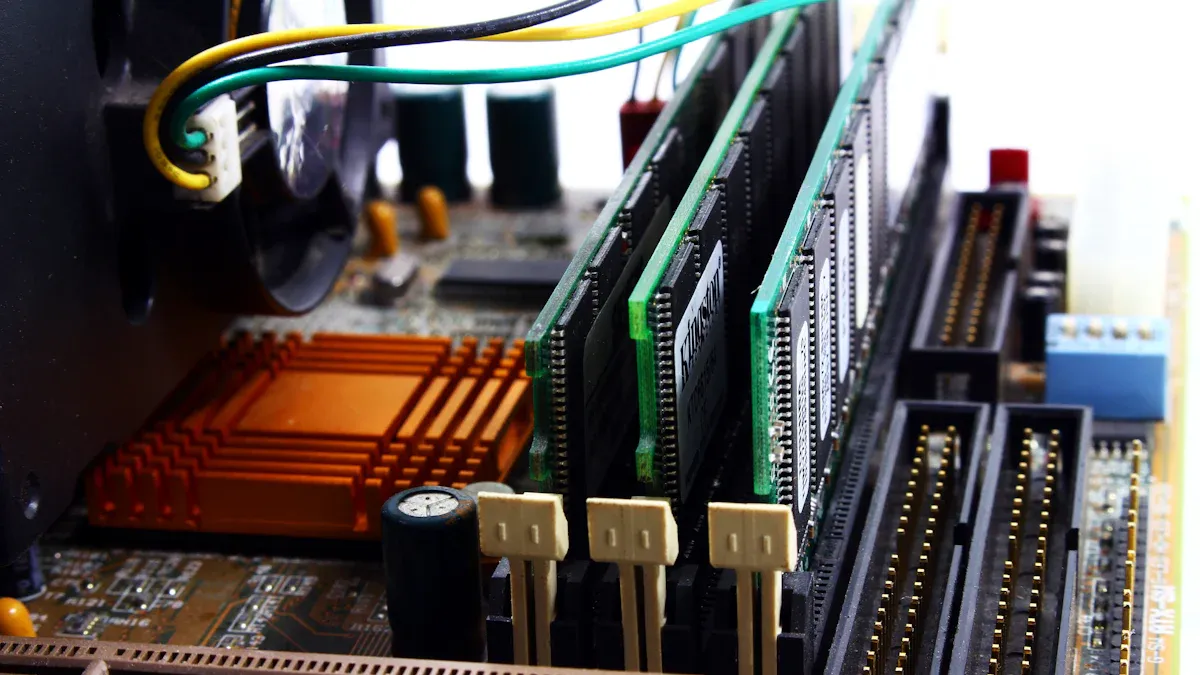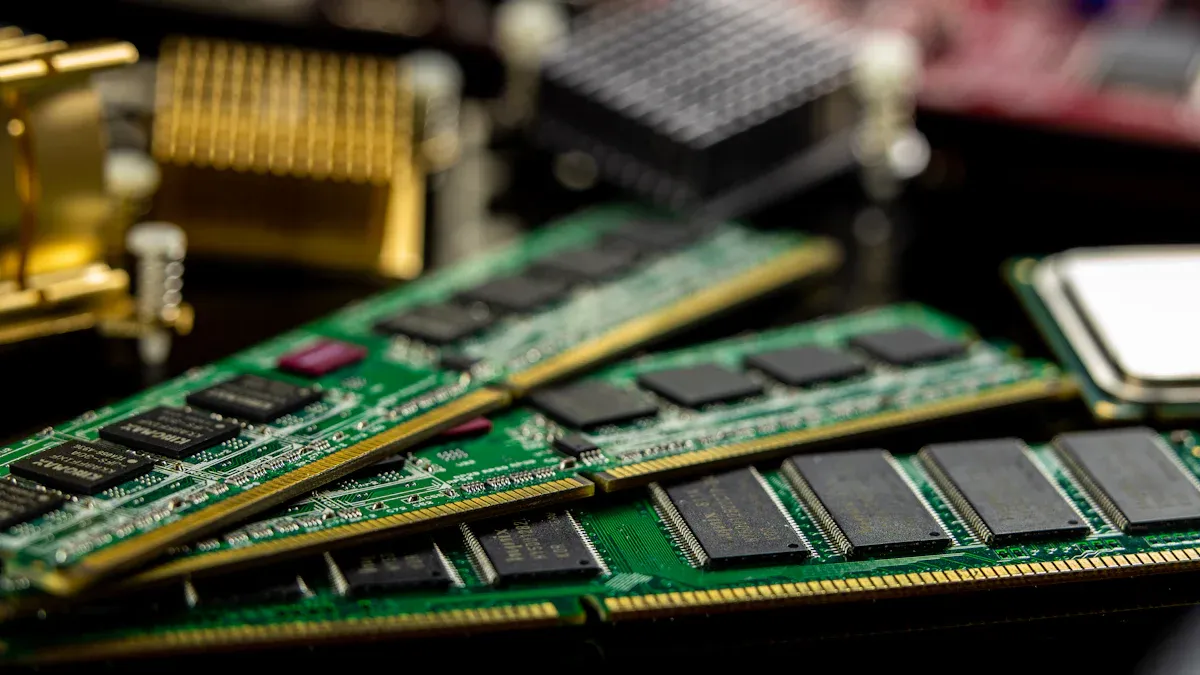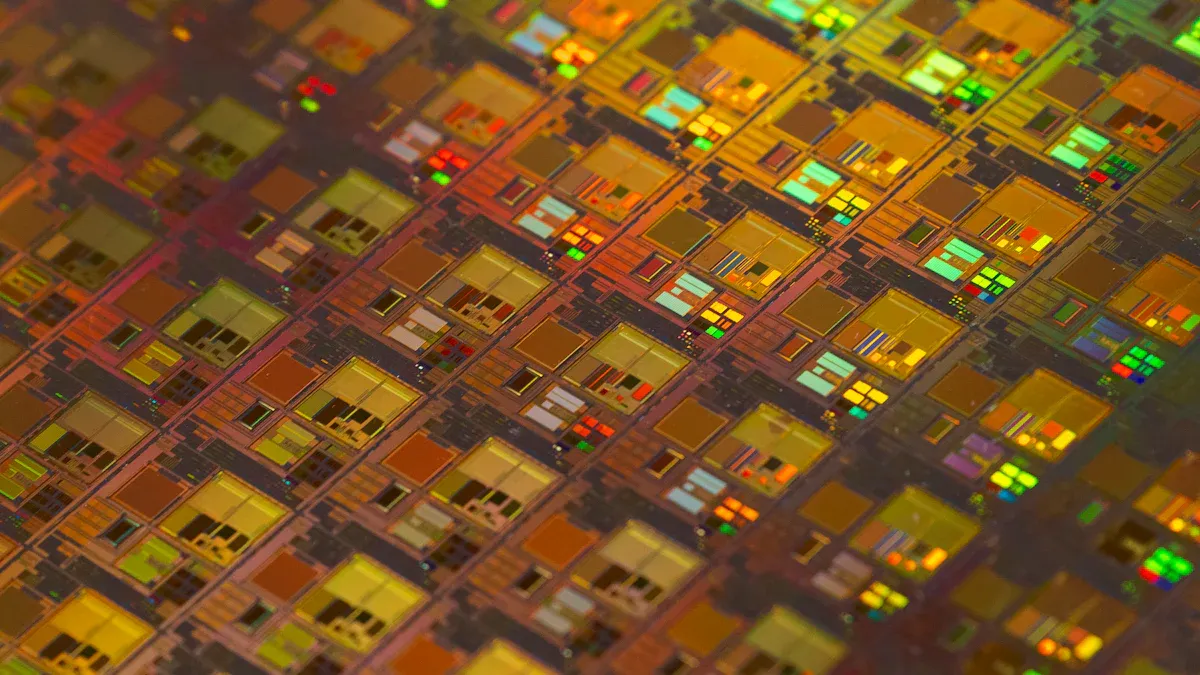
Semiconductor-grade SiC coating is essential in semiconductor manufacturing, significantly improving equipment durability and performance. SiC coatings provide robust protection against wear, thermal stress, and chemical damage. For instance, CVD coating for etching chambers, such as SiC-coated graphite fixtures, accounts for 80% of the epitaxial growth equipment market. European manufacturers have noted that SiC Coating can extend equipment lifespan by up to 20%, showcasing its remarkable effectiveness.
Key Takeaways
- SiC coatings make equipment last longer, saving money on replacements.
- These coatings help with heat transfer, making machines work better.
- SiC coatings stop damage from wear and chemicals, needing less fixing.
Key Properties of SiC Coatings

High Hardness and Wear Resistance
SiC coatings are renowned for their exceptional hardness, which makes them highly resistant to wear and abrasion. This property is critical in semiconductor manufacturing, where equipment components face constant mechanical stress. The durability of SiC coatings ensures that tools maintain their structural integrity even under prolonged use. This reduces the frequency of replacements and enhances the overall reliability of manufacturing systems.
Exceptional Thermal Conductivity and Stability
The thermal conductivity of SiC coatings is another standout feature. Research highlights that SiC composites can achieve thermal conductivity values as high as 220 W/m·K, depending on factors like particle size distribution. This superior heat dissipation capability is vital in semiconductor applications, where precise temperature control is essential. SiC coatings also exhibit remarkable thermal stability, allowing them to perform reliably in high-temperature environments. These properties make them indispensable for applications such as power electronics and heat sinks, where efficient heat management is crucial.
- Key advantages of SiC coatings in thermal applications include:
- Efficient heat dissipation, reducing energy losses.
- Enhanced performance in handling higher voltages and faster switching speeds.
- Prolonged lifespan of components exposed to extreme temperatures.
Superior Chemical Resistance to Corrosive Environments
SiC coatings provide outstanding chemical resistance, even in highly corrosive environments. This resistance stems from the formation of protective oxide layers, such as TiO and NiO, which act as barriers against corrosive agents. The fine grain size of SiC coatings promotes a uniform oxide layer, further enhancing their protective capabilities. Additionally, the presence of Co-Ni elements strengthens passivation, reducing the corrosion rate and ensuring long-term durability. These characteristics make SiC coatings ideal for protecting equipment exposed to aggressive chemical processes in semiconductor manufacturing.
Applications of SiC Coatings in Semiconductor Manufacturing Equipment
Plasma Chambers and Protection Against Plasma Erosion
Plasma chambers in semiconductor manufacturing endure extreme conditions, including high temperatures and corrosive plasma environments. SiC coatings provide a robust protective layer that shields the underlying materials from plasma erosion. This protection significantly reduces mass loss during ablation, as demonstrated in comparative tests. Coated samples exhibit much lower mass reduction than uncoated graphite, ensuring longer operational life. Additionally, the zirconia layer formed by the ZrB2-SiC coating acts as a thermal barrier, preventing oxidative damage to the graphite substrate. These properties make SiC coatings indispensable for maintaining the integrity of plasma chambers.
Wafer Handling Systems and Prevention of Mechanical Wear
Wafer handling systems require precision and durability to manage delicate semiconductor wafers. SiC coatings enhance the wear resistance of components, reducing mechanical degradation over time. Compared to uncoated graphite, SiC coatings lower wear rates by up to 70%, ensuring consistent performance in demanding environments. Their versatility allows application on various graphite substrates, including flexible and rigid forms. This adaptability ensures that wafer handling systems remain reliable, even under continuous operation, minimizing the risk of damage to wafers and improving overall efficiency.
Etching Tools and Resistance to Chemical Degradation
Etching tools face constant exposure to aggressive chemicals during semiconductor manufacturing. SiC coatings provide exceptional chemical resistance, forming a protective barrier that prevents corrosion. This resilience ensures that etching tools maintain their structural integrity, even in highly corrosive environments. The fine grain size of SiC coatings promotes uniform oxide layer formation, further enhancing their durability. By extending the lifespan of etching tools, SiC coatings reduce the need for frequent replacements, leading to cost savings and improved productivity.
Benefits of SiC Coatings for Equipment Longevity

Reduced Maintenance and Repair Costs
SiC coatings significantly reduce maintenance and repair costs by enhancing the durability of semiconductor manufacturing equipment. Their high hardness and resistance to wear and corrosion ensure that critical components remain functional for extended periods. This reduces the frequency of repairs and replacements, leading to substantial financial savings. For example, industrial coatings like SiC coatings have been shown to extend machinery lifespan, minimizing costly interruptions caused by equipment failures. By protecting components from damage, these coatings help manufacturers maintain consistent production levels without incurring excessive maintenance expenses.
| Industry | Benefits of SiC Coatings | Impact on Maintenance Costs |
|---|---|---|
| Automotive | Improved braking performance, reduced wear and noise | Lower frequency of brake component replacements |
| Aerospace | Enhanced performance in turbine blades, reduced fuel consumption | Extended lifespan of critical components |
| General | High hardness, thermal conductivity, wear and corrosion resistance | Overall reduction in maintenance costs |
Minimized Downtime and Improved Operational Efficiency
SiC coatings play a crucial role in minimizing downtime and improving operational efficiency. By protecting equipment from wear and chemical degradation, these coatings ensure uninterrupted operation. This reliability allows manufacturers to meet production targets without delays caused by equipment malfunctions. In various industries, SiC coatings have demonstrated their ability to enhance efficiency. For instance, aerospace engines experience a 15-20% lifespan extension, while industrial pumps and compressors see a 30-40% reduction in friction losses. These improvements translate to higher productivity and reduced operational costs.
| Application | Improvement Metrics |
|---|---|
| Aerospace Engines | 15-20% lifespan extension, reduced maintenance costs |
| Industrial Pumps and Compressors | 30-40% reduction in friction losses |
| Coal-Fired Power Plants | 3-5% higher net efficiency, saving 50,000 tons of coal annually per 1GW capacity |
| Steel Manufacturing | 8-12% energy savings, 20% more heat recovery |
Extended Lifespan of Critical Components, Leading to Cost Savings
The ability of SiC coatings to extend the lifespan of critical components offers long-term cost savings. By shielding equipment from mechanical wear, thermal stress, and chemical corrosion, these coatings ensure that components remain operational for longer periods. This durability reduces the need for frequent replacements, lowering overall operational expenses. In semiconductor manufacturing, where precision and reliability are paramount, SiC coatings provide an essential layer of protection. Their application not only enhances equipment longevity but also contributes to sustainable manufacturing practices by reducing waste and resource consumption.
SiC coatings play a vital role in enhancing the durability and efficiency of semiconductor manufacturing equipment. Their unmatched properties and diverse applications make them indispensable in the industry. Advancements in CVD reactor technology, new precursor materials, and post-processing innovations continue to elevate their importance. The table below highlights key developments shaping the future of SiC coatings:
| Evidence Type | Description |
|---|---|
| Advancements in CVD reactor technology | Enabling larger and more uniform SiC production |
| Development of new precursor materials | Improving CVD SiC growth rates and quality |
| Breakthroughs in coating technologies | Supporting extreme environment applications |
| Expansion of production capacities | Meeting rising demand across industries |
As these advancements progress, SiC coatings will remain a cornerstone of semiconductor manufacturing, driving innovation and sustainability.
FAQ
What makes SiC coatings essential for semiconductor manufacturing?
SiC coatings provide unmatched wear resistance, thermal stability, and chemical protection. These properties ensure equipment durability and reliable performance in demanding semiconductor manufacturing environments.
How do SiC coatings reduce maintenance costs?
SiC coatings protect equipment from wear and corrosion. This reduces the need for frequent repairs or replacements, saving manufacturers significant maintenance expenses over time.
Can SiC coatings improve operational efficiency?
Yes, SiC coatings minimize downtime by enhancing equipment reliability. This ensures uninterrupted production, helping manufacturers meet targets and improve overall efficiency.
💡 Tip: Regularly inspect SiC-coated components to maximize their lifespan and performance.


